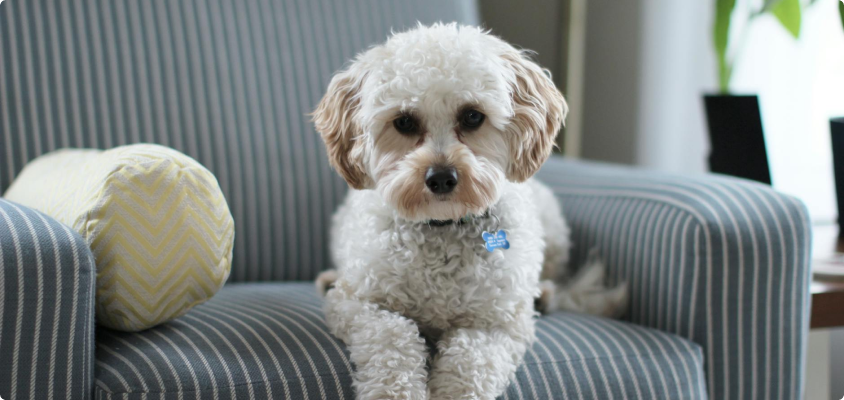
Bringing a pet into your home is exciting, but it also requires some changes to ensure your space is safe, comfortable, and stimulating for your new furry companion. Whether you’re a first-time pet owner or a seasoned pro, these simple hacks can help you transform your home into a pet-friendly haven that supports both their needs and your lifestyle.
1. Designate a Pet Space
Every pet needs a designated area where they can relax, sleep, and feel safe. Whether it’s a cozy corner in the living room or a dedicated room, giving your pet their own space helps them feel more secure. For dogs, a crate with a comfortable bed or mat can serve as a safe retreat. For cats, consider setting up a quiet area with a soft blanket, bed, and toys.
If you have limited space, a well-placed pet bed or a padded cushion in a quiet corner can work just as well. Make sure the area is away from high-traffic zones and loud noises, so your pet can rest undisturbed.
2. Pet-Proof Your Home
Pets are naturally curious, and they may try to chew, climb, or explore areas that could be hazardous. Pet-proofing your home is a crucial step to keeping them safe. Here’s how to start:
- Secure loose wires and cables: Pets, especially puppies and kittens, love to chew on cords. Use cable management tools like cord covers to keep wires out of reach.
- Store toxic items: Household cleaners, medications, and certain plants can be toxic to pets. Keep these items in locked cabinets or high shelves, away from curious paws.
- Use pet gates: If there are areas of your home where you don’t want your pet to roam, like the kitchen or specific rooms, install pet gates to create boundaries.
3. Use Pet-Friendly Furniture and Fabrics
To maintain a stylish yet pet-friendly home, consider using furniture and fabrics that are durable and easy to clean. Leather or microfiber sofas, for example, are resistant to scratches and stains, making them excellent choices for homes with pets. Opt for furniture with removable, washable covers to make cleaning up fur, dirt, or accidents easy.
For flooring, hardwood, tile, or vinyl are better options than carpet, as they’re easier to clean and won’t trap pet hair. If you prefer rugs, choose ones made from low-pile, stain-resistant materials that are easier to maintain.
4. Create Vertical Spaces for Cats
Cats love to climb and explore their environment from a high vantage point. Creating vertical spaces in your home will keep your cat entertained and help them burn off energy. Install cat trees, shelves, or wall-mounted perches that allow your cat to safely climb and observe their surroundings.
In smaller homes, multi-level cat trees with built-in scratching posts can serve as both play areas and napping spots. Providing these spaces will help prevent your cat from scratching furniture or climbing on surfaces you’d prefer they avoid.
5. Provide Plenty of Toys and Enrichment

Pets need mental and physical stimulation to stay happy and healthy, so make sure to provide a variety of toys and enrichment activities. For dogs, interactive toys like puzzle feeders or treat-dispensing balls can keep them entertained for hours. For cats, feather wands, laser pointers, and catnip toys can satisfy their hunting instincts and provide fun.
If you have a busy schedule, consider setting up automatic feeders or pet cameras with treat dispensers so you can interact with your pet remotely.
6. Create a Pet-Friendly Outdoor Space
If you have a yard, transforming it into a pet-friendly outdoor space can enhance your pet’s overall well-being. For dogs, ensure the yard is securely fenced, providing a safe space for them to run and play. You can also add a sandbox or digging pit to keep them occupied and prevent unwanted digging in flower beds.
For cats, consider installing a “catio” or enclosed outdoor area where they can safely explore the outdoors without the risk of escaping or encountering dangers.
In smaller spaces, like apartments or balconies, create a pet-safe outdoor area by using pet-proof screens, and provide plants that are non-toxic to pets for added enrichment.
7. Ensure Proper Hydration with Accessible Water Stations
Pets need access to fresh water at all times, so be sure to place water bowls in areas that are easy for them to reach. For multi-level homes, consider placing water bowls on each floor. If you have a dog, make sure they have access to water both indoors and outdoors.
For cats, try using a water fountain instead of a bowl. Many cats prefer running water, and a pet water fountain can encourage them to drink more, which is especially important for their kidney health.
8. Invest in Easy-to-Clean Pet Bedding
Pet bedding can quickly accumulate hair, dirt, and odors, so choose options that are easy to clean and maintain. Look for washable, machine-friendly pet beds or mats made from waterproof or stain-resistant materials. Regularly washing your pet’s bedding helps prevent the buildup of allergens and keeps your home smelling fresh.
If you have a pet that sheds heavily, using a washable cover over your pet’s favorite sleeping spot can make cleanup much easier.
9. Keep a Regular Cleaning Routine
Maintaining a pet-friendly home means keeping up with regular cleaning to manage fur, dirt, and dander. Vacuum and sweep frequently, especially in areas where your pet spends the most time. Use a vacuum with a HEPA filter to trap pet hair and allergens more effectively.
Lint rollers and pet-specific grooming tools can help reduce shedding and keep your furniture fur-free. Don’t forget to clean pet bowls, toys, and beds regularly to maintain a clean and healthy environment for both you and your pet.
10. Use Non-Toxic Cleaners
When cleaning your home, always opt for pet-safe, non-toxic cleaning products. Many household cleaners contain chemicals that can be harmful to pets if ingested or inhaled. Look for eco-friendly, non-toxic alternatives, or make your own pet-safe cleaners using natural ingredients like vinegar and baking soda.
If you’re unsure whether a cleaner is safe for your pet, consult with your veterinarian for recommendations.
Creating a pet-friendly home doesn’t have to be complicated. By making a few adjustments to your space, you can ensure it’s both safe and comfortable for your furry friend. With these simple hacks, you’ll provide an environment that supports your pet’s physical and emotional well-being, helping them live a happy, healthy life in their new home.